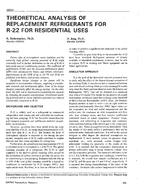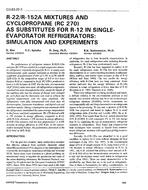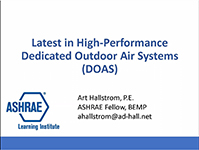With increasing thermal insulation the ground floor of a building having an outdoor-air ventilated crawl space foundation structure, the temperature and relative humidity in the crawl space are dependent on the ventilation provided by the external air. This is the case for well-insulated ground structures in a cold winter and temperate humid, summer climate. During the summer the relative humidity can become so high that growth of microorganisms can become established. Various steps can be taken to improve conditions. Plastic sheeting on the ground is essential; thermal insulation of the ground or of the perimeter provides more marginal improvement. Measures such a dehumidification or heating of the foundation area, in combination with one or more of the above measures, are considerably more effective. The principle for the design of heated foundations in new buildings is described, together with measured data from such structures. A comparison is also given between moisture conditions in traditional foundation structures in old buildings and present-day outdoor-air-ventilated foundations and heated foundations.
KEYWORDS: crawl spaces, moisture, moisture barriers, moulds, comparing, foundations.
Citation: Symposium, ASHRAE Trans. 1994, Vol.100, Part 1,
Product Details
- Published:
- 1994
- File Size:
- 1 file , 830 KB
- Product Code(s):
- D-17980


